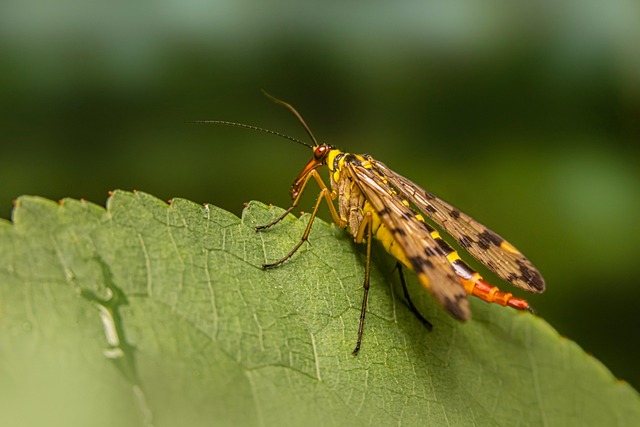Fly breeding sites in commercial and residential areas pose significant health risks due to disease spread and pathogen vectoring. Proactive inspections by trained professionals using innovative techniques like specialized lighting and thermal imaging identify and eliminate these sites without harmful chemicals. Advanced methods include eco-conscious traps, baits, and the promotion of natural predators like birds and bats. Regular maintenance, cleanliness, and proper sanitation are key for long-term prevention and minimizing environmental impact, resulting in effective, sustainable eco-friendly fly solutions.
In the realm of pest control, expert inspections play a pivotal role in identifying fly breeding sites. These insidious creatures thrive in bustling environments, from moist remnants in labyrinthine spaces to nested areas within structures. Understanding these sites is crucial for implementing effective eco-friendly fly solutions. This article delves into various aspects, including common breeding grounds, the significance of eco-friendly inspections, advanced identification techniques, and sustainable post-inspection strategies. By embracing these methods, folks can ensure a cleaner, healthier environment.
Understanding Fly Breeding Sites: Common Areas and Potential Risks
Fly breeding sites are often overlooked but can pose significant health risks, especially in commercial and residential settings. Understanding where and why flies breed is crucial for implementing effective eco-friendly fly solutions. Common areas that attract and facilitate fly breeding include food preparation areas, garbage bins, and damp, warm environments. Kitchens, restaurants, and even outdoor dining spaces may become hotspots for fly activity due to the constant availability of food debris and moisture.
Potential risks associated with these sites are multiple. Fly larvae feed on organic matter, which can include spoiled food and waste, leading to the spread of diseases like salmonella and E. coli. Moreover, flies themselves can act as vectors, transferring pathogens from one contaminated area to another. By identifying and addressing these breeding grounds proactively, eco-friendly fly management strategies can significantly reduce health hazards and ensure safer environments for both employees and customers.
The Role of Eco-Friendly Inspections in Pest Control
In today’s world, where environmental consciousness is on the rise, there’s a growing demand for eco-friendly pest control methods. Traditional pest management often relies on harsh chemicals that can have detrimental effects on the ecosystem and human health. As such, expert inspections play a pivotal role in identifying fly breeding sites without resorting to these harmful substances. These inspections focus on natural and sustainable solutions, ensuring a healthier balance between humans, animals, and their surroundings.
Eco-friendly inspections involve a thorough assessment of properties, businesses, and public spaces by trained professionals who employ innovative techniques to locate and eliminate fly breeding grounds. This includes identifying water sources, organic debris, and structural vulnerabilities that attract flies. By understanding these factors, experts can recommend tailored eco-solutions such as improved sanitation practices, specific plant species known to repel flies, and advanced trap systems designed to capture and kill flies humanely. These methods not only effectively control fly populations but also contribute to a greener environment.
Advanced Techniques for Effective Fly Breeder Identification
In the realm of expert inspections, advanced techniques have emerged as powerful tools for identifying fly breeding sites, especially in the context of eco-friendly solutions. Professional inspectors now employ sophisticated methods to pinpoint and mitigate these breeding grounds efficiently. One such technique involves the use of specialized lighting that attracts flies, allowing investigators to monitor their behavior and track the sources of infestation. This approach not only facilitates the early detection of breeding sites but also guides the implementation of targeted, eco-conscious control measures.
Additionally, modern technology like thermal imaging cameras plays a pivotal role in this process. These tools can reveal hidden moisture and temperature variations that serve as optimal conditions for fly reproduction, enabling inspectors to uncover potential breeding areas that might be overlooked during conventional inspections. By combining these advanced techniques with rigorous training, professionals are equipped to offer effective yet environmentally friendly solutions, ensuring a healthier and more sustainable environment.
Implementing Sustainable Solutions Post-Inspection
After expert inspections identify fly breeding sites, the next crucial step is implementing sustainable and eco-friendly solutions to address the issue effectively. This involves a strategic approach to prevent future infestations while minimizing environmental impact. One effective method is using natural predators like birds and bats, which can help control fly populations in an organic manner. Additionally, introducing eco-friendly traps and baits that target specific fly species without harming beneficial insects or wildlife can be part of the strategy.
Regular maintenance and monitoring are essential to ensuring these sustainable solutions remain effective. This includes keeping breeding sites clean, removing potential water sources, and maintaining proper sanitation practices. By integrating these measures into existing pest management plans, businesses and communities can achieve long-term fly control while promoting a greener and healthier environment, thereby fostering a more sustainable future.
Expert inspections, combining advanced techniques and eco-friendly practices, are crucial in identifying fly breeding sites. By understanding common areas and potential risks, adopting sustainable solutions post-inspection, and leveraging these insights for prevention, businesses can effectively manage fly populations. Eco-friendly fly solutions not only mitigate pest control challenges but also contribute to a healthier environment.
